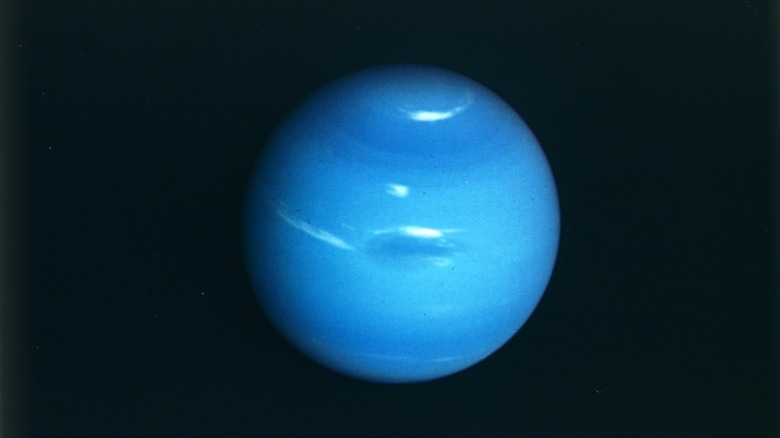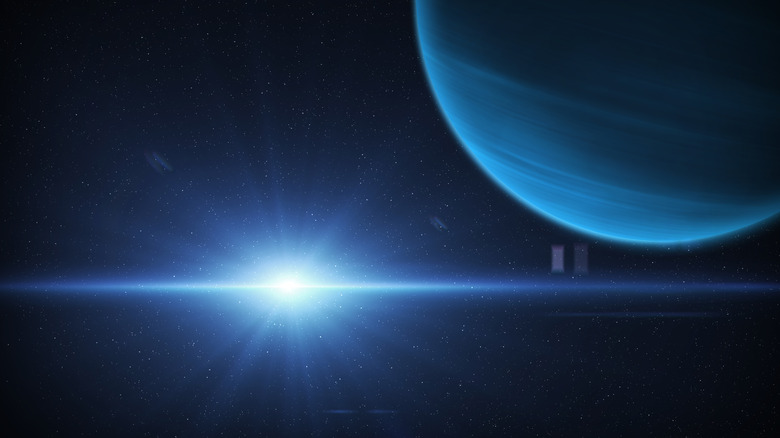Why You'll Never Want To Cross Paths With Flying Ice Shards On Neptune
The vastness of the universe holds, at least relative to the average human, an infinite amount of potential discovery and danger. According to Ranker, traveling to any celestial body in our solar system alone poses an immense risk. The possibility of incineration could come anywhere from solar winds to the molten lava lakes of Io, while fatally cold temperatures exist on most other moons and dwarf planets. Other unique sources of celestial peril include the crushing, acidic atmosphere of Venus and the possible ocean of electrified hydrogen that awaits any who fall into Jupiter.
While Neptune was discovered in 1846, it was not until 1989 that humanity was able to truly see it through Voyager 2 (via NASA). No other probe has been sent to visit it since, and observations from the Hubble telescope have had to suffice (though NASA has offered up a sufficient alternative). As the farthest from the sun, the blue planet is far from being able to support water, in contrast to its Roman mythological namesake. Like the other gas giants, however, it is not devoid of water at all. It just exists in a way that any potential visitors would be met with a catastrophically quick end.
Icy winds faster than hurricanes will shred any visitors
Extremely high winds are a common trait among our solar system's gas giants, and although their exact causes are not yet understood (via Christian Science Monitor), their composition is. In the case of Neptune, hydrogen, methane (the source of its blue color), and helium make up most of the atmosphere (via NASA). What truly sets the "Ice Giants" Neptune and Uranus apart from Jupiter and Saturn is their distance from the sun's warmth, while Neptune is differentiated from Uranus by having the highest wind speeds in the solar system.
The frozen materials in its atmosphere (and possibly diamonds) are perpetually propelled over 700 miles per hour according to Weather.gov — speeds that dwarf the most extreme Earth winds ever recorded. Needless to say, this would not end well for any human that managed to enter the planet's atmosphere. If the winds alone weren't fatal, the supersonic hailstorm would shred any space tourists with haste that few other planets could match.

